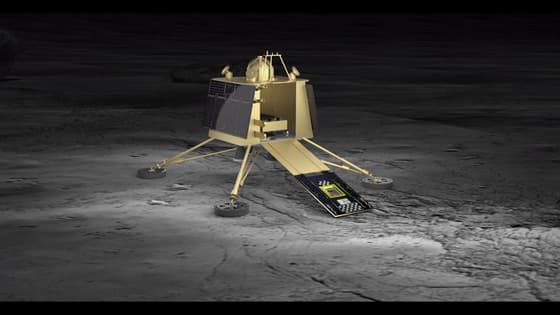
Video Explainer: The four-stage landing process of Chandrayaan-3
Chandrayaan-3: ISRO has planned to touch down the Vikram lander module on the lunar surface in four stages. Asianet Newsable will help you understand the Moon landing process in detail
ISRO has planned to touch down Chandrayaan-3's lander module on the lunar surface in four stages. They are:

First stage: Rough Braking phase
Second stage: Next is - Altitude Hold Phase
Third stage: After that- Fine Braking Phase
Fourth stage: Terminal Descent Phase
Starting at a height of around 25 km above the lunar surface, the landing procedure begins. In 690 seconds, the module will decelerate from a speed of 1.68 km/s to a speed of 358 m/s. In this period, the module will travel 713.5 kilometres. It will be 7.4 kilometres above the lunar surface when the rough breaking is over.
Next is the altitude holding phase.
The speed of the engines will be adjusted to 336 meters per second. The module will be 6.8 kilometres above the lunar surface at the end of this ten-second phase. The remaining distance to the landing site is 28.52 km.
Now comes the crucial fine braking stage.
The module will travel 28.52 km in 175 seconds and will arrive right over the landing sight. The module will hover for 12 seconds between a height of 1.3 km and 800 m above the lunar surface.
Only seconds left for landing. It's time to land now.
After hovering for 12 seconds, the module descends. It will reach a height of 150 meters from the landing site in 131 seconds. For 22 seconds, the module will remain at that altitude.
Here is where an important decision must be taken. Should the landing be made at the scheduled spot or whether another location should be chosen?
Based on the information provided by the cameras and sensors on the lander, the software will make the final decision. If everything is alright, then comes the next stage.
With the engine turned off, the module will descend straight down in 73 seconds, reaching a height of 10 metres above the lunar surface. In the ninth second after the engine is turned off, the module will touchdown.
The pace of this downward descent must be less than two metres per second, and even if it is slightly faster than three metres per second, the lander's legs have enough strength to hold it.
If it is determined that it is not viable to land at a height of 150 metres, then the module will go to the next position, moving a maximum of 150 metres horizontally, and seek out a different location. There the same process will be repeated.